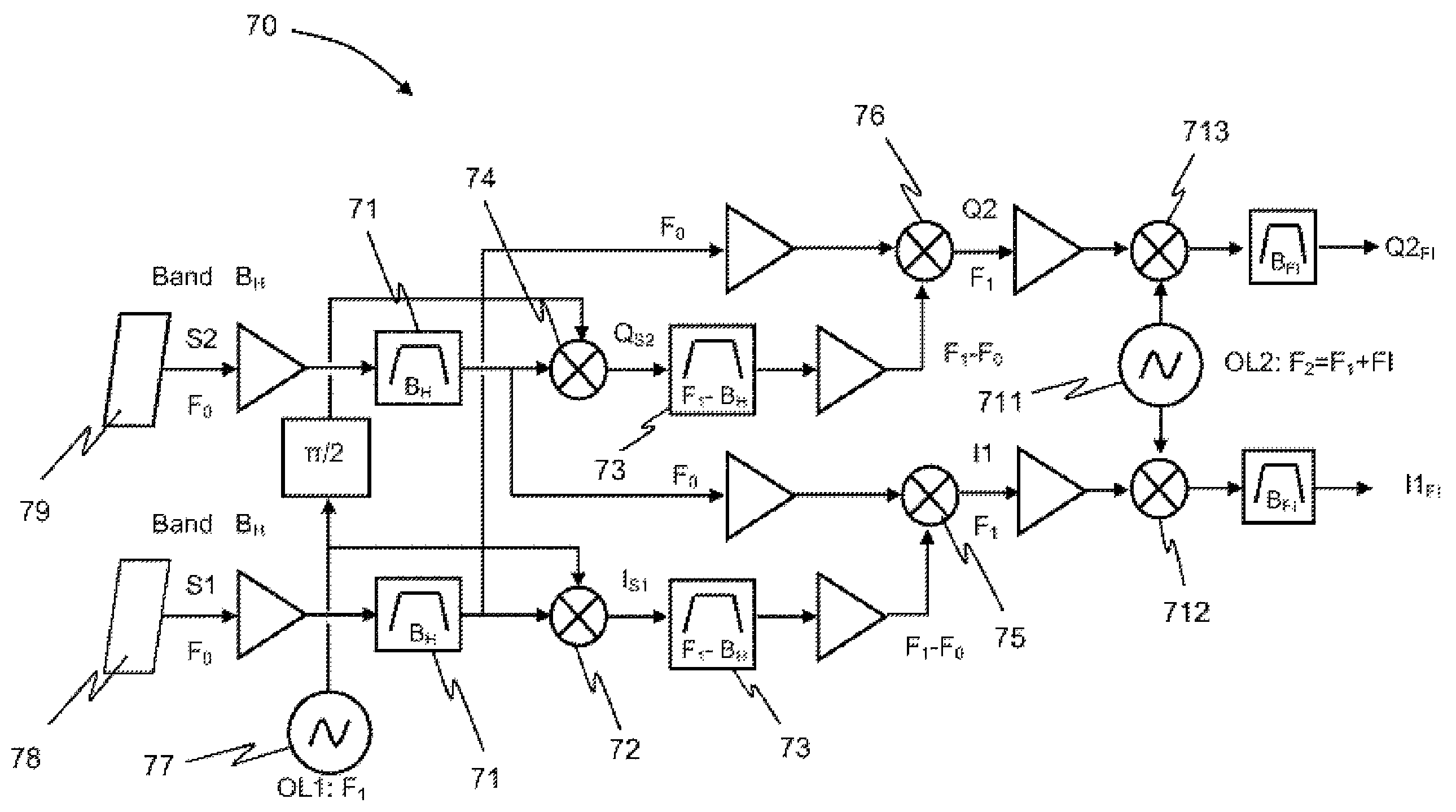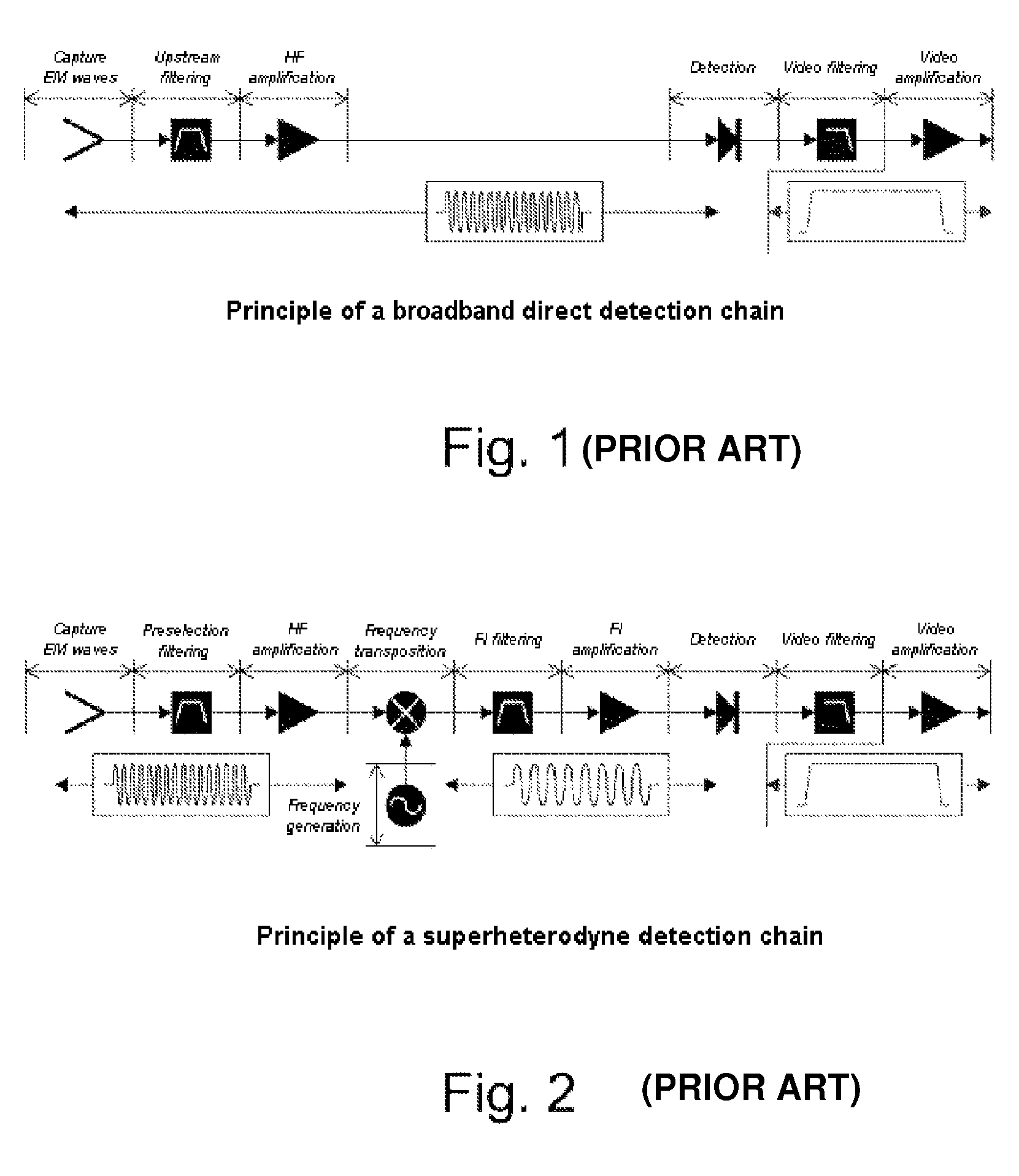Device for broadband reception by autotransposition and application to the detection and characterization of radioelectric emissions
a radioelectric emission and autotransposition technology, applied in the direction of transmission monitoring, amplitude demodulation, instruments, etc., can solve the problems of inability to generally do, increase the complexity of the hardware reception function, and the cost, and achieve high sensitivity, simple and inexpensive means, and high shape factor
- Summary
- Abstract
- Description
- Claims
- Application Information
AI Technical Summary
Benefits of technology
Problems solved by technology
Method used
Image
Examples
Embodiment Construction
[0065]The text which follows describes the various characteristics of the device according to the invention as well as an application of this device to the production of a system ensuring the detection of emissions and the characterization of the waves constituting the detected emissions, as well as the location of the source of the detected emissions.
[0066]The device according to the invention comprises, in a combination, several means which cooperate to solve the problem posed, namely:[0067]At least two identical antennas, with large gain, which are directive in at least one plane, in bearing for example. These antennas are designed to simultaneously receive the signals originating from one and the same remote emitter;[0068]means forming a broadband reception chain for the signals picked up by the antennas, signals whose central frequency included in a given band BH is unknown a priori. These means are configured so as to demodulate the signal S1 picked up by the first antenna by ...
PUM
 Login to View More
Login to View More Abstract
Description
Claims
Application Information
 Login to View More
Login to View More - R&D
- Intellectual Property
- Life Sciences
- Materials
- Tech Scout
- Unparalleled Data Quality
- Higher Quality Content
- 60% Fewer Hallucinations
Browse by: Latest US Patents, China's latest patents, Technical Efficacy Thesaurus, Application Domain, Technology Topic, Popular Technical Reports.
© 2025 PatSnap. All rights reserved.Legal|Privacy policy|Modern Slavery Act Transparency Statement|Sitemap|About US| Contact US: help@patsnap.com



